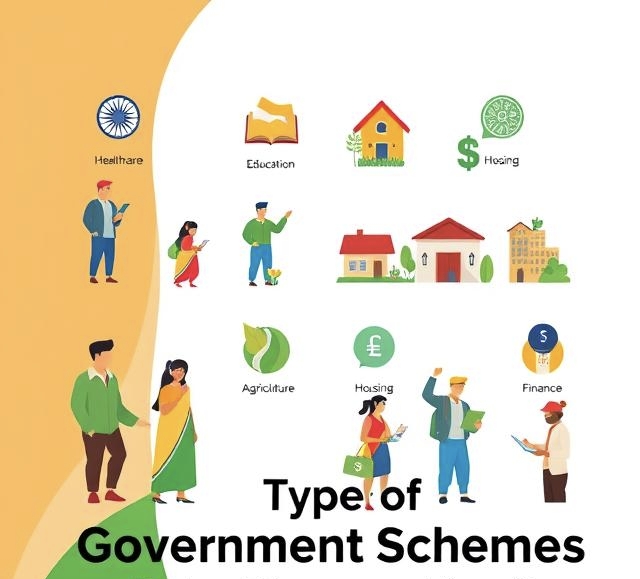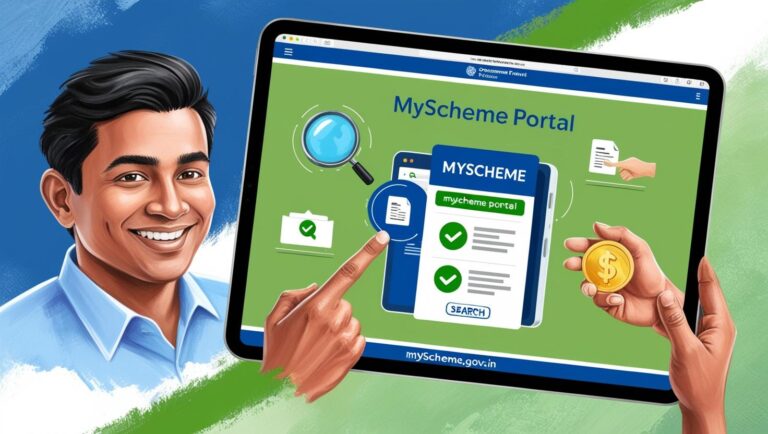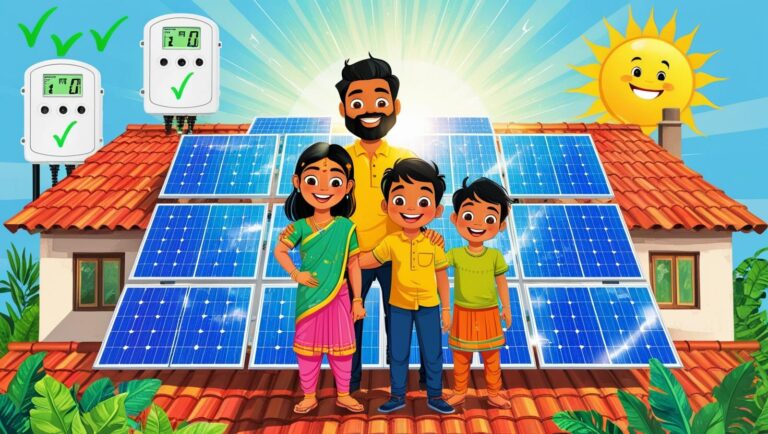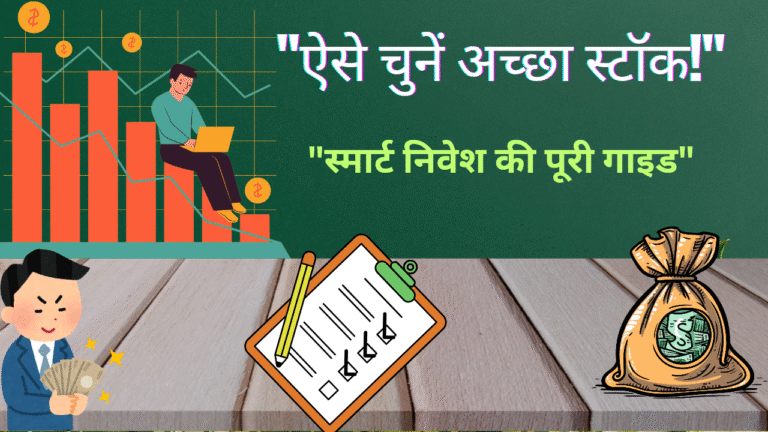
Government schemes are more than just policy announcements—they are intended as lifelines for millions of Indians, touching nearly every aspect of daily life. But how do these schemes really help (or sometimes fall short for) the average citizen? Here’s a closer look at some recent initiatives, with a focus on their real-world effects.
- 1. PM Surya Ghar Muft Bijli Yojana (Rooftop Solarisation Scheme)
- 2. PM Awas Yojana (Urban & Rural)
- 3. Mudra Yojana
- 4. Ayushman Bharat Pradhan Mantri Jan Aarogya Yojana (PM-JAY)
- 5. Pradhan Mantri Janjati Adivasi Nyaya Maha Abhiyan (PM JANMAN)
- 6. Skill Development Schemes (e.g., Pradhan Mantri Kaushal Vikas Yojana)
- 7. Social Security and Pension Schemes (e.g., Atal Pension Yojana, NSAP)
- 8. Women and Child Welfare Schemes (e.g., Poshan Abhiyan, Matru Vandana Yojana)
- Conclusion: The Real Impact
1. PM Surya Ghar Muft Bijli Yojana (Rooftop Solarisation Scheme)
What it is:
Provides up to 300 units of free electricity per month to 1 crore households through rooftop solar installations.
How it helps:
- Reduces electricity bills: Households can save ₹15,000–₹18,000 annually, a significant relief for middle- and lower-income families.
- Promotes green energy: Encourages adoption of clean energy, reducing dependence on fossil fuels and lowering pollution.
- Creates jobs: Boosts employment in the solar and installation sector.
Challenges:
- Initial setup and awareness are hurdles, especially in rural areas.
- Some families may struggle with upfront costs or lack of roof space.
2. PM Awas Yojana (Urban & Rural)
What it is:
Aims to provide affordable housing to poor and middle-class families, with a new target of 3 crore additional houses and a special Urban 2.0 initiative for 1 crore urban families4.
How it helps:
- Home ownership: Enables lakhs of families to move from informal settlements or rented homes to secure, permanent housing.
- Women’s empowerment: Many houses are registered in women’s names, boosting their social status and security.
- Boosts local economy: Construction generates jobs and demand for materials.
Challenges:
- Delays in construction and allocation can leave beneficiaries waiting for years.
- Urban slum dwellers sometimes face relocation issues.
3. Mudra Yojana
What it is:
Offers collateral-free loans (now up to ₹20 lakh) to small entrepreneurs and self-employed individuals.
How it helps:
- Supports small businesses: Enables shopkeepers, artisans, and service providers to expand or start new ventures.
- Promotes self-employment: Especially beneficial for youth and women, reducing dependence on traditional jobs.
Challenges:
- Some beneficiaries report difficulty accessing loans due to documentation or bank reluctance.
- Repayment can be tough if the business doesn’t succeed.
4. Ayushman Bharat Pradhan Mantri Jan Aarogya Yojana (PM-JAY)
What it is:
Provides health insurance coverage up to ₹5 lakh per family per year for secondary and tertiary care to economically vulnerable families.
How it helps:
- Reduces out-of-pocket medical expenses: Families can access quality healthcare without financial ruin.
- Improves access: Empanels thousands of hospitals, including private ones, across the country.
Challenges:
- Not all hospitals are empanelled, and some may refuse cashless treatment.
- Awareness and documentation issues can limit access in remote areas.
5. Pradhan Mantri Janjati Adivasi Nyaya Maha Abhiyan (PM JANMAN)
What it is:
Targets Particularly Vulnerable Tribal Groups (PVTGs) to ensure 100% saturation of government schemes in tribal areas, covering over 44 lakh individuals in 194 districts3.
How it helps:
- Social inclusion: Brings health camps, entitlements, and welfare benefits directly to marginalized communities.
- Empowerment: Focuses on education, healthcare, and livelihood, helping break cycles of poverty and exclusion.
Challenges:
- Remote locations and language barriers can hinder implementation.
- Requires strong monitoring to ensure benefits reach the intended recipients.
6. Skill Development Schemes (e.g., Pradhan Mantri Kaushal Vikas Yojana)
What it is:
Provides vocational training and certification to youth to enhance employability4.
How it helps:
- Bridges skill gap: Prepares youth for modern jobs, including in technology and services.
- Boosts employment: Certified individuals have better job prospects and earning potential.
Challenges:
- Quality of training and alignment with market needs can vary.
- Placement rates are sometimes lower than expected.
7. Social Security and Pension Schemes (e.g., Atal Pension Yojana, NSAP)
What they are:
Provide pensions and financial security to the elderly, widows, and disabled individuals.
How they help:
- Reduces vulnerability: Offers a basic safety net for those with little or no income.
- Promotes dignity: Ensures the elderly and disadvantaged can meet basic needs.
Challenges:
- Pension amounts are modest and may not keep pace with inflation.
- Reaching remote or marginalized groups remains a challenge.
8. Women and Child Welfare Schemes (e.g., Poshan Abhiyan, Matru Vandana Yojana)
What they are:
Focus on nutrition, health, and financial support for pregnant women, lactating mothers, and children.
How they help:
- Improves health outcomes: Reduces malnutrition and supports early childhood development.
- Empowers women: Direct financial transfers and support services improve maternal health and autonomy.
Challenges:
- Implementation gaps and leakages can limit impact.
- Cultural barriers may restrict women’s access in some communities.
Conclusion: The Real Impact
Government schemes in India have undeniably transformed millions of lives—making healthcare, education, housing, and entrepreneurship more accessible. They have reduced poverty, improved health, and created new opportunities, especially for the most vulnerable.
However, challenges remain: delays, lack of awareness, bureaucratic hurdles, and implementation gaps can dilute the benefits. For schemes to truly empower the common man, continued focus on transparency, last-mile delivery, and community engagement is essential.
In summary:
Government schemes are powerful tools for social and economic change—but their true value is realized only when they reach, and work for, the people who need them most.





